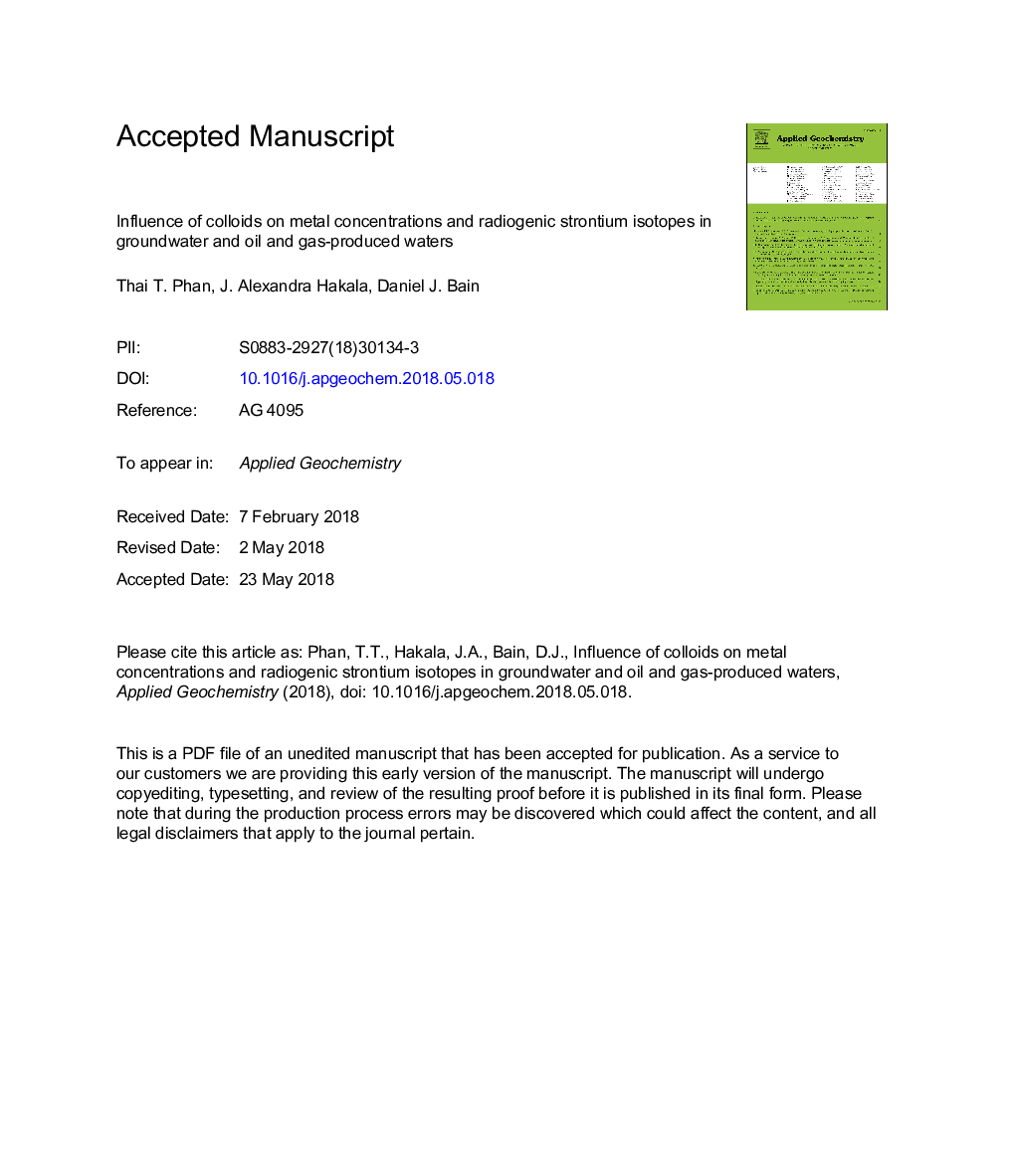| Article ID | Journal | Published Year | Pages | File Type |
|---|---|---|---|---|
| 8863068 | Applied Geochemistry | 2018 | 34 Pages |
Abstract
Concentrations and isotopic compositions of Li and Sr can be used to identify water-rock interactions and fluid mixing in petroleum reservoirs, such as mixing between hydraulic fracturing fluid and in-situ formation water in hydraulically fractured shales. However, the physical changes during mixing in the subsurface environment and during collection of produced water are not clear. We hypothesize that the colloidal particles potentially affect measured constituents in produced waters and degrade the utility of Li and Sr isotopes as geochemical tracers of fluid sources and water-rock interactions. Therefore, this study investigated the influence of colloids on the metal concentrations and isotopes (δ7Li and 87Sr/86Sr) by analyzing water that was filtered through successively smaller membranes (0.45â¯Î¼m, 0.2â¯Î¼m, and 3â¯kDa). We found that the differences in the concentrations of major and most minor elements (B, Ca, Ga, K, Li, Mg, Na, Ga, Rb, and Sr) in the <0.45â¯Î¼m, the <0.2â¯Î¼m, and the <3â¯kDa fractions of groundwater and oil produced water are not statistically different (pâ¯>â¯0.05; Student's t-test). Likewise, similar results were observed for the <0.45â¯Î¼m, the <0.2â¯Î¼m-centrifuged, and the <3â¯kDa fractions of gas produced water. In the <0.45â¯Î¼m fraction of groundwater, U is up to 8% greater than U in the 3â¯kDa fraction, possibly due to complexation of U with natural organic matter. The formation of Fe oxyhydroxides during sample collection was observed in all three types of waters, however does not significantly affect the measured 87Sr/86Sr between three fractions of the study waters. On the other hand, Al, Si, and Ti are enriched in the <0.45â¯Î¼m fraction relative to the <3â¯kDa fraction of gas produced water, likely due to aluminosilicate minerals (e.g., clays and quartz). However, interactions of Sr and Li with these minerals do not result in statistically significant differences (pâ¯>â¯0.05) in 87Sr/86Sr among three fractions of groundwater and both oil and gas produced waters. Similarly, no difference in δ7Li in <0.45â¯Î¼m and <0.2â¯Î¼m-centrifuged fractions of gas produced water was observed. Ultimately, overestimated concentration data of Al, Si, and Ti in water filtered through a 0.45â¯Î¼m membrane due to the presence of colloidal clays can create misinterpretations of chemical water-rock interactions in hydraulically fractured shale in the subsurface.
Keywords
Related Topics
Physical Sciences and Engineering
Earth and Planetary Sciences
Geochemistry and Petrology
Authors
Thai T. Phan, J. Alexandra Hakala, Daniel J. Bain,
